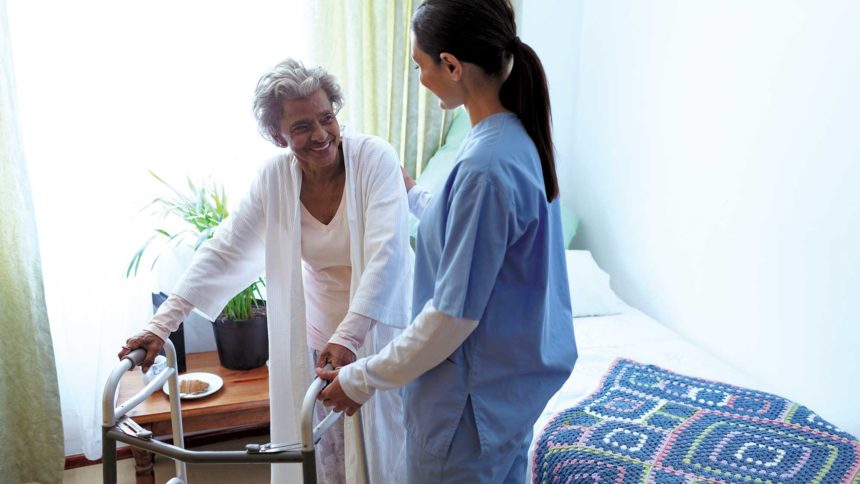
Federal programs meant to help prevent falls and related injuries aren’t reaching a large subset of older adults who could benefit from them, according to a new Government Accountability Office report released Tuesday.
Adults with disabilities aged 45 to 59 years reported fall injuries at higher rates than those aged 60 years and older, the independent agency has found. In 2020, 42% of adults in that group experienced a fall, as did 15% without a disability. Among adults aged 60 years and older, those rates in the disabled and non-disabled were 40% and 18%, respectively.
Despite these apparent similarities in falls risk, the Centers for Disease Control and Prevention’s falls data doesn’t include older adults with disabilities who are younger than age 60, GAO investigators stated in the report.
New data needed
This limits who receives help, they said. Nine federal falls prevention and accessibility related programs currently serve older adults or adults with disabilities. Targeting a larger group of older people at risk for falls and improving information sharing between programs may help prevent even more falls and their costly consequences to patients and health systems, the GAO stated. To do so, the CDC should begin to look for and report broader data on falls, it recommended.
Falls are the leading cause of death from unintentional injury among older adults, resulting in billions in healthcare costs, it noted.
“Without expanding the scope of its analysis of falls data, CDC will continue to miss opportunities to better understand populations at risk of falls and to inform future programmatic efforts for these populations,” it stated. “Such efforts may also help to ensure these groups receive needed services and to reduce unintentional injuries across all age groups, which could be especially relevant for meeting CDC’s Healthy People objectives.”
Shared information
The GAO also suggested that the Administration on Community Living (ACL) support and add information-sharing across federal falls prevention programs and among its disability network.
All of the four key agencies overseeing these falls prevention programs have concurred with the recommendations, GAO noted. They include the ACL, the CDC, the Department of Housing and Urban Development and the Department of Veterans Affairs.
Related articles:
Ouch: Falls injuries continue to rise among U.S. seniors, study finds
Seniors more fearful of falling after months of low physical activity
Falls prevention efforts urged for patients with cardiovascular disease




